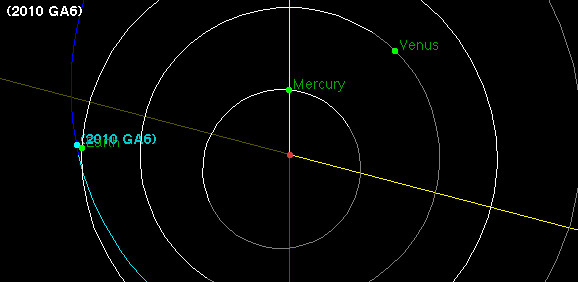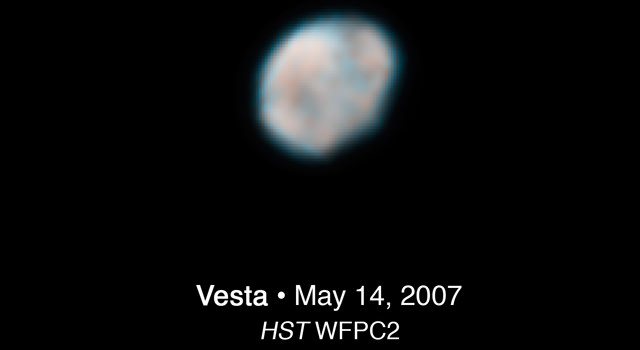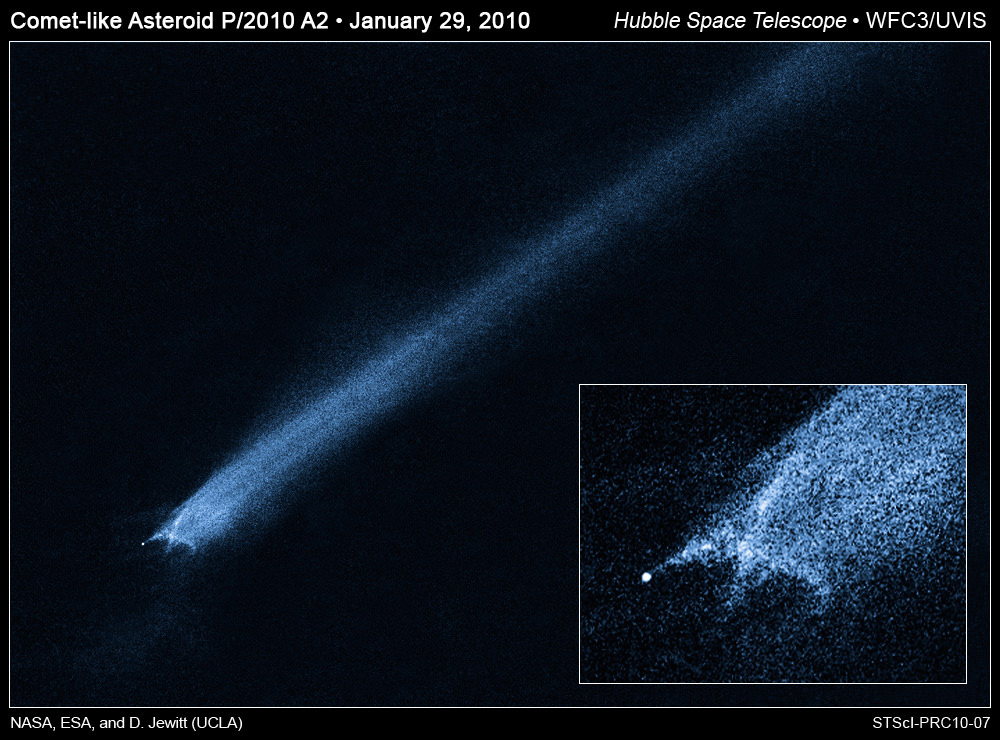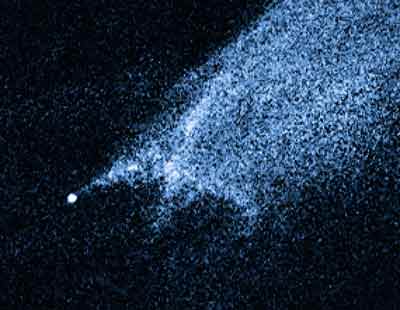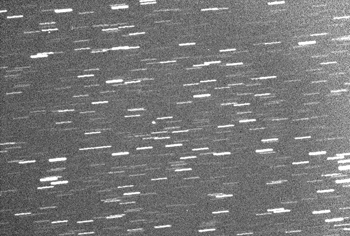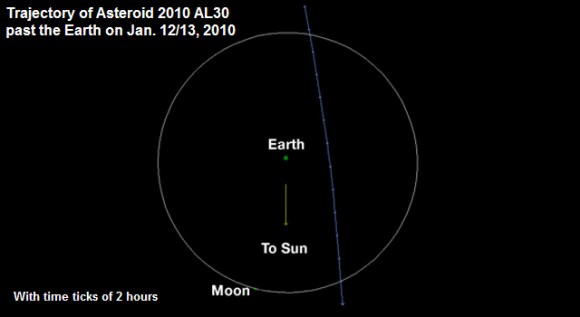Are we ready to act if an asteroid or comet were to pose a threat to our planet? No, says a new report from the National Research Council. Plus, we don’t have the resources in place to detect all the possible dangerous objects out there. The report lays out options NASA could follow to detect more near-Earth objects (NEOs) that could potentially cross Earth’s orbit, and says the $4 million the U.S. spends annually to search for NEOs is insufficient to meet a congressionally mandated requirement to detect NEOs that could threaten Earth. “To do what Congress mandated NASA to do is going to take new technology, bigger telescopes with wider fields,” said Don Yeomans, Manager of NASA’s Near Earth Object Program Office, speaking at the American Geophysical Union conference last month.
However, Yeomans said work is being done to improve the quality and quantity of the search for potentially dangerous asteroids and comets. “We have a long term goal to have three more 1.8 meter telescopes,” he said, “and the Large Synoptic Survey Telescope with an 8.4 meter aperture in 2016. Once these new facilities are in place, the data input will be like drinking from a fire hose, and the rate of warnings will go up by a factor of 40.”
But getting all these facilities, and more, online and running will take continued and additional funding.
Congress mandated in 2005 that NASA discover 90 percent of NEOs whose diameter is 140 meters or greater by 2020, and asked the National Research Council in 2008 to form a committee to determine the optimum approach to doing so. In an interim report released last year, the committee concluded that it was impossible for NASA to meet that goal, since Congress has not appropriated new funds for the survey nor has the administration asked for them.
But this issue isn’t and shouldn’t be strictly left to NASA, said former astronaut Rusty Schweickart, also speaking at the AGU conference. “There’s the geopolitical misconception that NASA is taking care of it,” he said. “They aren’t and this is an international issue.”
Schweickart said making decisions on how to mitigate the threat once a space rock already on the way is too late, and that all the decisions of what will be done, and how, need to be made now. “The real issue here is getting international cooperation, so we can — in a coordinated way — decide what to do and act before it is too late,” he said. “If we procrastinate and argue about this, we’ll argue our way past the point of where it too late and we’ll take the hit.”
But this report deals with NASA, and committee from the NRC lays out two approaches that would allow NASA to complete its goal soon after the 2020 deadline; the approach chosen would depend on the priority policymakers attach to spotting NEOs. If finishing NASA’s survey as close as possible to the original 2020 deadline is considered most important, a mission using a space-based telescope conducted in concert with observations from a suitable ground-based telescope is the best approach, the report says. If conserving costs is deemed most important, the use of a ground-based telescope only is preferable.
The report also recommends that NASA monitor for smaller objects, and recommends that immediate action be taken to ensure the continued operation of the Arecibo Observatory in Puerto Rico, and support a program at the Goldstone Deep Space Communications Complex. Although these facilities cannot discover NEOs, they play an important role in accurately determining the orbits and characterizing the properties of NEOs.
Schweikart quoted Don Yeomans as saying the three most important things about asteroid mitigation is to find them early, find them early and find them early.
“We have the technology today to move an asteroid,” Schweikart said. “We just need time. It doesn’t take a huge spacecraft to do the job of altering an asteroid’s course. It just takes time. And the earlier we could send a spacecraft to either move or hit an asteroid, the less it will cost. We could spend a few hundred million dollars to avoid a $4 billion impact.”
But the report put out by the NRC stresses the methods for asteroid/comet defense are new and still immature. The committee agreed that with sufficient warning, a suite of four types of mitigation is adequate to meet the threat from all NEOs, except the most energetic ones.
• Civil defense (evacuation, sheltering in place, providing emergency infrastructure) is a cost-effective mitigation measure for saving lives from the smallest NEO impact events and is a necessary part of mitigation for larger events.
• “Slow push” or “slow pull” methods use a spacecraft to exert force on the target object to gradually change its orbit to avoid collision with the Earth. This technique is practical only for small NEOs (tens of meters to roughly 100 meters in diameter) or possibly for medium-sized objects (hundreds of meters), but would likely require decades of warning. Of the slow push/pull techniques, the gravity tractor appears to be by far the closest to technological readiness.
• Kinetic methods, which fly a spacecraft into the NEO to change its orbit, could defend against moderately sized objects (many hundreds of meters to 1 kilometer in diameter), but also may require decades of warning time.
• Nuclear explosions are the only current, practical means for dealing with large NEOs (diameters greater than 1 kilometer) or as a backup for smaller ones if other methods were to fail.
Although all of these methods are conceptually valid, none is now ready to implement on short notice, the report says. Civil defense and kinetic impactors are probably the closest to readiness, but even these require additional study prior to reliance on them.
Source: National Research Council
Read the entire report

